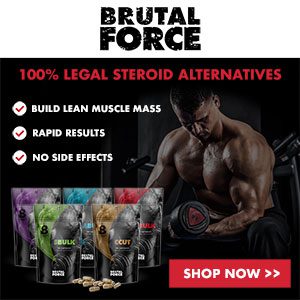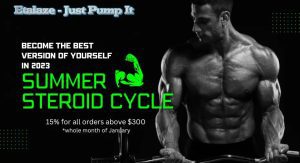Beginners
Bodybuilding for Teenagers: Mistakes to Avoid
Many novices come into the gym and think they will work hard, will follow a diet and after 3-4 months they will look amazing. Further, they train to exhaustion, verifies diet for calories, take supplements on a schedule, and after those 3-4 months, they see that have to work even harder to build a great body.
If you are a teen looking to build muscle than be aware of one of the biggest mistake made by teenagers over - setting unrealistic goals. Further, we will detail more other errors which keep away a teenager from getting great results in the gym.
As we said setting unrealistic goals is a capital error for a teen. Many drops out training, being discouraged by the lack of results after a hard period of training. They received significantly less than what they expected.
So, from experience can be said that if you propose to gain 9 kg in the first year than your goal is very significant. Building a champion body requires time, hard work, a strict diet and correct approach to relaxation and recovery. The key in bodybuilding is patience.
Creating a champion of the body takes time, hard work, strict diet and follow the correct approach to relaxation and recovery. In bodybuilding, you will need patience. Try to keep the motivation and confidence that you're moving in the right direction and eventually you can achieve anything.
A great advice here would be to take pictures every four weeks to see the difference, measure the weight and the main parameters. So you can see how your body develops, and if necessary make changes to the program. You will see that pictures will show you the result and help you stay motivated. Keep full accounting records of parameters, together with photographs and a year later with your own eyes you will see the difference.
Another mistake is lack of consistency. Some beginners think that if they have trained for four weeks and then made a pause of two weeks, then they can go back and start with exactly the place from which they completed earlier. This is absolutely wrong! You have to be consistent and do exercises all the time, otherwise, you will constantly drop back. You have to show consistency in training, diet and rest as well.
No plan of training is the third big mistake admitted by teenagers. Coming to the gym without a plan a training not only means that you will all the have to ask the trainer about the next movements to be done, but you, most important, the risk to get injured. Do your plan of training before going the gym using the help of your training and strictly follow it.
Must Read: How to Set up Your Own Bodybuilding Training Program
Following a training schedule of more advanced bodybuilders.
It is ok to admire bodybuilders who have reached already great results and, but it is absolutely wrong to follow his schedule. These schedules are too complex for beginners.
When a bodybuilder is working his body over the years, he knows how it responds to a particular exercise. He knows what part of his body requires large loads, which is just to maintain.
Blind adherence to a schedule of other athletes may not work for you, develop your body evenly. In addition, some of the load and intensity of exercise may be too great for the beginner.
Performing the wrong exercises is another common mistake among teenagers bodybuilders. Training on a set of muscle mass should be short, up to an hour, and include first of all exercises with free weights. Choosing to work with too many gym machines will not make you gain muscle quickly, contrary it will happen slowly. That’s why barbells and dumbbells are the right choices for you.
Must Read: How to Choose the Right Weights When Training
Using too much weight while executing in wrong exercises is another common mistake. Maybe it happens to you too to see in the gym arrogant young man who does bench press with maximum load at the bar in order to show all around how strong he is.
The main problem that young man miss is that their body grows faster than the muscles and tendons. Also, the risk to get injured, since complying the correct form of execution with such a weight is very difficult. Young people should know that in bodybuilding weight is just a tool of resistance to the muscles, not a toy for those who want to brag about.
One-two approaches with big weight are more characteristic powerlifting. For you is enough to do correctly 8-15 approaches performance with the lowest weight and after some time you will be able to fully enjoy the results.
Paying less attention to diet is one of the errors that young bodybuilders usually do. Many teenagers honestly do all they need to do in training, but the result still does not are visible. In almost 90% of cases, the main cause is diet.
Must Read: Bodybuilding Diet Myths
Just remember that training creates conditions for the growth of muscles, but namely the food is responsible for it growth. Bear in mind that without food, there are no chances to build muscle mass. Of course, this doesn’t mean that you can eat everything appears behind your eyes.
Remember, for quality muscle you need to accurately count the calories and eat about 500 calories above what you normally burn in the gym. Too many calories (especially fats and sugars), just make you fat. So, make a strict diet and stick to it. Remember, there should be six times a day small meals about every 2-3 hours.
In the food must be sufficient amount of carbohydrates (brown rice, oatmeal, sweet potatoes) as a fuel for exercise, protein (white fish, chicken) as a building material for muscles, and a small amount of fat for normal hormone levels. Having three solid meals (breakfast, lunch, and dinner) and taking a protein shake between them is the perfect option for you.
Lack of sleep. For adolescents with a mass of unspent energy, it can be hard to accept, but the body is so constructed that grows mainly when a person sleeps. Deprive yourself of sleep and your hormonal activity will decline, and no growth simply will not. Eight or nine hours of sleep will give you the optimum conditions for growth. Seven hours is a minimum below which you simply must not be omitted.
Must Read: Do Anabolic Steroids Keep You Awake at Night? 4 Must-Try Solutions
These are the most common errors admitted by young men looking to build muscle quickly. But you have to know that creating a nice body doesn’t happen over the night. Having perseverance and avoiding the above mistakes you will be able to achieve your goals!
Beginners
14 Morning Run Safety Tips for Bodybuilding and Fitness

Morning Run can be a refreshing way to start the day, but it comes with its own set of challenges and safety concerns. For bodybuilders, who often have rigorous training schedules, it's crucial to take extra precautions to ensure a safe and effective workout. Here are some essential safety tips for bodybuilders who run in the wee hours of the morning:
Must Read: Here Is How to Know Your MRV
1. Plan Your Morning Run Route
Choose a well-lit, familiar route that is safe and free from heavy traffic. Avoid secluded areas and opt for routes with plenty of pedestrian traffic. If possible, run in parks or designated running trails.
2. Wear Reflective Gear
Visibility is key when running in the dark. Wear reflective clothing, shoes, and accessories to ensure that you are seen by drivers and other pedestrians. A headlamp or flashlight can also help you see the path ahead.
3. Inform Someone Before a Morning Run
Always let someone know your running route and expected return time. This way, if something goes wrong, someone will be aware and can alert authorities if necessary.
4. Carry Identification During Morning Run
Wear an ID bracelet or carry identification in your pocket. Include your name, emergency contact information, and any medical conditions or allergies. This information can be crucial in case of an emergency.
5. Stay Alert
Keep your senses sharp and stay aware of your surroundings. Avoid wearing headphones or earbuds, as they can distract you from potential dangers. Instead, listen to the sounds around you and be prepared to react quickly.
6. Run Against Traffic
When running on roads, always run against the direction of traffic. This allows you to see oncoming vehicles and gives you more time to react if needed.
7. Vary Your Routine
Don't run the same route at the same time every day. Varying your route and schedule can help prevent potential attackers from predicting your movements.
8. Carry a Personal Safety Device
Consider carrying a personal safety device, such as a whistle or pepper spray. These items can help you defend yourself if you encounter a threat.
9. Stay Hydrated
Even though it's early in the morning, your body still needs hydration. Drink water before and after your run, and consider carrying a small water bottle with you.
10. Warm Up Properly for Morning Run
Before you start running, take a few minutes to warm up. Stretching and light exercises can help prevent injuries and prepare your muscles for the workout ahead.
11. Dress Appropriately
Wear moisture-wicking clothing to keep cool and dry. Layering is essential, especially in colder months, so you can adjust your clothing as you warm up.
12. Check the Weather
Before heading out, check the weather forecast. Avoid running in extreme conditions, such as heavy rain, thunderstorms, or extreme heat. If conditions are unsafe, consider an indoor workout instead.
13. Trust Your Instincts
If something doesn't feel right, trust your instincts and find a safer location. Your safety is the top priority, and it's better to be cautious than sorry.
14. Post-Run Routine
After your run, take time to cool down and stretch. This helps reduce muscle soreness and improves flexibility. Also, refuel with a healthy breakfast to replenish your energy levels.
Read Also: 10 Best Powerlifting Steroid Cycles
Analysing Your Morning Run Route
Running in unsafe areas can put you at risk, especially in the early morning when visibility is low. Here are some routes to avoid:
Secluded or Remote Areas
Avoid running in places that are far from help, such as remote trails or rural roads. These areas can be dangerous if you encounter wildlife or if you get injured and no one is around to help.
Check High-Crime Areas Before Morning Run
Stick to well-lit, populated areas and avoid neighborhoods with high crime rates. If you're unsure about the safety of an area, it's best to find an alternative route.
Avoid Unlit Roads During Morning Run
Running on roads without streetlights can be hazardous, especially if there's no sidewalk. Cars might not see you, and it's harder to see potential hazards on the road.
Busy Highways or Interstates
Avoid running on or near highways where traffic is fast-moving and there's little room for pedestrians. The noise and exhaust can also be harmful.
Construction Zones
Be cautious around areas with ongoing construction. There might be debris, uneven surfaces, and heavy machinery that can pose risks.
Blind Curves and Hills
Routes with sharp turns or steep hills can be dangerous because you can't see oncoming traffic. It's safer to choose routes with good visibility.
Areas with Poor Drainage Aren't Safe for Morning Run
Avoid routes that are prone to flooding or have poor drainage. Wet, slippery surfaces can lead to falls and injuries.
Unfamiliar Trails
Stick to trails you know well. Unfamiliar trails can be tricky to navigate, and you might get lost or encounter unexpected obstacles.
Overall
By following our morning run safety tips, you enjoy the benefits while minimizing the risks. Remember, safety should always come first, and taking these precautions can help ensure a safe and enjoyable workout experience.
Related Article: How to Regulate Your Food Quantity
Beginners
Calisthenics: Secret to Building A Better Upper and Middle Body

Calisthenics exercises involve using your body weight as resistance to build muscle and strength. These workouts are an effective way to develop lean muscle mass and improve overall fitness. The exercises can include push-ups, pull-ups, squats, and planks, which target different muscle groups. By consistently incorporating calisthenics into your fitness routine, you can achieve muscle growth and improved definition. This can be further enhanced by pairing your workouts with a proper diet and gradually increasing the difficulty of exercises through progressive overload.
Calisthenics exercises are suitable for people of all fitness levels and ages, intending to improve strength, flexibility, and endurance. Basic movements are recommended for beginners, while more advanced practitioners can engage in complex routines. It is vital to adjust the exercises to your fitness level and seek advice from a healthcare professional if you have any underlying medical conditions or concerns before starting a calisthenics program.
What Gains One Expect from Calisthenics
Calisthenics can be valuable in bodybuilding for several reasons:
Muscular Endurance
Calisthenics exercises like push-ups, pull-ups, and dips build muscular endurance, which complements the strength gained through weightlifting.
Functional Strength
Calisthenics focuses on compound movements that mimic real-life activities, promoting functional strength and balanced muscle development.
Body Control
Calisthenics improves body control, balance, and coordination, enhancing your overall physique and performance.
Variety
Incorporating calisthenics into your routine can provide variety, helping prevent plateaus and boredom in your training.
Minimal Equipment
Calisthenics often require minimal or no equipment, making it accessible and cost-effective for bodybuilders.
Lean Muscle Mass
Calisthenics can help promote the development of lean muscle mass and a more aesthetic, sculpted physique.
Injury Prevention
Calisthenics can help improve joint stability and flexibility, potentially reducing the risk of injury in weightlifting.
Core Strength
Many calisthenics exercises engage the core, contributing to a strong midsection, which is important in bodybuilding.
Related Article: Top 10 Erection Gels & Creams for Him
While calisthenics can be a valuable addition to a bodybuilding routine, it's essential to find the right balance between weightlifting and bodyweight exercises to achieve your specific fitness goal.
Various Calisthenics Exercises to Try
As mentioned, calisthenics is a form of exercise that uses your body weight for resistance. There are many types of calisthenics exercises, and I can give you a brief overview of some of the common ones along with basic instructions on how to perform them:
-
Push-Ups:
- Start in a plank position with your hands shoulder-width apart.
- Lower your body until your chest nearly touches the ground.
- Push back up to the starting position.
-
Pull-Ups:
- Find a horizontal bar or pull-up bar.
- Hang from the bar with your palms facing away from you.
- Pull your body up until your chin is above the bar.
-
Squats:
- Stand with your feet shoulder-width apart.
- Bend your knees and lower your body, keeping your back straight.
- Return to the starting position.
-
Lunges:
- Stand with one foot forward and one foot back.
- Bend both knees to lower your body, keeping your front knee over your ankle.
- Return to the starting position and switch legs.
-
Planks:
- Get into a push-up position with your forearms on the ground.
- Keep your body straight from head to heels, and hold this position.
- Mountain Climbers:
- Start in a push-up position.
- Alternately, draw your knees toward your chest, as if you're "running" in place.
-
Dips:
- Find parallel bars or use the edge of a sturdy surface.
- Lower your body by bending your elbows, then push back up.
- Bicycle Crunches:
- Lie on your back with your hands behind your head.
- Lift your shoulders off the ground and bring one knee to the opposite elbow, alternating sides.
-
Burpees:
- Begin in a standing position.
- Drop into a squat position and place your hands on the ground.
- Kick your feet back into a plank position, then quickly return to the squat position.
- Jump up from the squat position.
- Handstand Push-Ups
-
- Find a wall for support and kick up into a handstand position.
- Lower your body by bending your arms, then push back up.
These are just a few examples of calisthenics exercises. It's important to start with proper form, progress gradually, and adapt the exercises to your fitness level. If you're new to calisthenics, consider consulting a fitness professional to ensure you perform the exercises correctly and safely.
Common Injuries and Prevention
Common injuries during calisthenics can include:
- Muscle Strains: These occur when you push your muscles beyond their capacity. To avoid them, warm up properly and gradually increase intensity.
- Tendonitis: Overuse of tendons can lead to inflammation and pain. To prevent this, focus on proper form and don't overtrain.
- Joint Injuries: Wrists, shoulders, and elbows can be susceptible to overuse injuries. Ensure proper form, strengthen supporting muscles, and give your joints adequate rest.
- Lower Back Pain: Poor form during exercises like the hollow body hold or leg raises can strain your lower back. Maintain a neutral spine and strengthen your core.
- Hand and Wrist Injuries: Grip-related injuries can happen during exercises like pull-ups. Use proper grips, consider grip-strengthening exercises, and use wrist supports if needed.
- Overtraining: Overtraining can lead to various injuries and burnout. Follow a structured workout plan, allow for sufficient rest, and listen to your body.
- Ligament Sprains: These can occur during movements like muscle-ups. Work on gradual progressions and techniques to prevent sudden stress on ligaments.
- Lack of Flexibility: Insufficient flexibility can lead to strains and injuries. Incorporate regular stretching and mobility exercises.
To avoid these injuries, it's crucial to prioritize proper form, progress gradually, incorporate rest and recovery days, and include flexibility and mobility work in your training routine. Additionally, consult with a fitness professional or physical therapist for guidance on your specific needs and limitations.
Important Read: 15 Bulking Supplements Today
Best Foods Before Calisthenics
Before calisthenics exercises, it's essential to consume foods that provide energy and support muscle function. Consider options like:
- Complex carbohydrates (e.g., whole grains, oatmeal) for sustained energy.
- Lean protein sources (e.g., chicken, tofu) to aid in muscle recovery.
- Fruits or vegetables for vitamins, minerals, and hydration.
- Healthy fats (e.g., nuts, avocados) in moderation for sustained energy.
Remember to eat a balanced meal a couple of hours before your workout to allow for digestion. Stay hydrated and avoid heavy, greasy, or high-fiber foods before exercising.
Recovery After Calisthenics
The best recovery process after calisthenics exercises typically includes the following:
Cool Down: Spend a few minutes doing light, low-intensity exercises like jogging in place or walking to gradually lower your heart rate and reduce muscle tension.
Stretching: Perform static stretches for the major muscle groups you worked on during your calisthenics routine. Hold each stretch for 15-30 seconds to improve flexibility and reduce the risk of muscle soreness.
Hydration: Rehydrate by drinking water to replace fluids lost through sweat during your workout.
Nutrition: Consume a balanced meal or snack that includes carbohydrates, proteins, and healthy fats within a few hours after your workout to help with muscle recovery.
Rest: Ensure you sleep enough to allow your body to recover and repair. Aim for 7-9 hours of quality sleep per night.
Active Recovery: Engage in low-impact activities like walking or swimming on rest days to promote blood flow and reduce muscle soreness.
Foam Rolling: Consider using a foam roller to perform self-myofascial release, which can help alleviate muscle tension and soreness.
Listen to Your Body: Pay attention to any signs of overtraining, pain, or discomfort. If needed, take extra rest days to allow your body to recover fully.
Remember that the specific recovery process may vary depending on your fitness level and the intensity of your calisthenics workout. It's essential to tailor your recovery routine to your individual needs and goals.
Alternatives to Calisthenics Exercises
There are many alternative exercises to calisthenics. Some options include:
- Weightlifting: Incorporate free weights or machines for strength training.
- Cardiovascular exercises: Activities like running, cycling, swimming, or dancing for aerobic fitness.
- Yoga: For flexibility, balance, and stress relief.
- Pilates: Focuses on core strength and flexibility.
- CrossFit: A high-intensity workout combining various exercises.
- Martial arts: Such as karate, judo, or kickboxing for self-defense and fitness.
- Resistance bands: Use bands to add resistance to your exercises.
- TRX training: Utilizes suspension straps for bodyweight exercises.
- Kettlebell training: Incorporate kettlebells for strength and conditioning.
- Circuit training: A mix of strength and aerobic exercises in a timed sequence.
Choose exercises that suit your fitness goals and preferences. Always consult a fitness professional if unsure which exercises are right for you.
Get Yourself A Good Coach to Help With Calisthenics
Finding a good coach for calisthenics exercises involves several steps:
Must Read: New Arrival Workout Equipment on Amazon for The Disabled
Research
Start by researching calisthenics coaches in your area. You can use search engines, social media, or fitness forums to find recommendations.
Credentials
Look for coaches who have relevant certifications, such as personal training or calisthenics coaching certifications. This indicates they have a certain level of expertise.
Experience
Check the coach's experience in calisthenics. A coach with a solid background in this field will more likely provide effective guidance.
Client Testimonials
Read reviews or ask for testimonials from previous clients. This can give you insight into their coaching style and the results they've helped others achieve.
Free Sessions or Consultations
Many coaches offer free initial consultations or trial sessions. Take advantage of these opportunities to get a feel for the coach's teaching style and how well you connect with them.
Compatibility
Ensure the coach's teaching approach aligns with your goals and preferences. Some coaches focus on specific aspects of calisthenics, so make sure they match your objectives.
Availability
Consider their availability and scheduling. Make sure their sessions fit into your daily or weekly routine.
Cost
Understand the coach's pricing structure and see if it fits your budget. While quality coaching is an investment, it should be affordable for you.
Communication
Effective communication with your coach is crucial. Ensure you can easily discuss your progress, goals, and concerns with them.
Progress Tracking
A good coach should have a system for tracking your progress and making necessary adjustments to your training plan.
Customization
Look for a coach who can tailor a calisthenics program to your needs and fitness level.
Motivation
A great coach should motivate and inspire you to achieve your fitness goals.
Location
Consider whether you prefer in-person coaching or are open to online coaching, which can provide access to coaches outside your local area.
Background Check
If you have any concerns, don't hesitate to check the coach's background and credentials thoroughly.
Remember that finding the right coach is a personal process, and it may take some time to find someone who aligns with your needs and goals. Don't rush the decision, and feel free to interview or consult with multiple coaches before making your choice.
Overall
To conclude, professional bodybuilders need to integrate calisthenics thoughtfully into their training, focusing on exercises that complement their goals and existing routines. Consulting with a fitness professional can help create a customized plan.
Beginners
Tren Cycle for Beginners

Bodybuilders must have a clear approach to the tren cycle for beginners. Trenbolone is a potent steroid that should be cautiously and properly researched.
For beginners, starting with a lower dosage and gradually increasing it over time is recommended. This allows the body to adjust to the effects of trenbolone and helps minimize the risk of potential side effects.
Start With A Plan
It is also important to have a well-structured cycle plan in place. This includes determining the cycle duration, dosages, and frequency of administration. Consulting with a knowledgeable healthcare professional or experienced trainer can provide valuable guidance in creating an effective cycle plan.
Additionally, proper nutrition and training protocols are essential during a trenbolone cycle. A balanced diet of protein, carbohydrates, and healthy fats will support muscle growth and recovery. Combined with an appropriate workout routine tailored to individual goals, this can maximize the benefits of the trenbolone cycle. Remember that safety should always be a priority when using any steroid.
Educating oneself about potential side effects, risks, and proper usage guidelines is crucial before embarking on a trenbolone cycle or any other steroid regimen. You're right! Proper nutrition and training protocols are crucial when using trenbolone or other steroid. A balanced diet is important to provide the necessary nutrients for muscle growth and recovery. Including sources of protein, carbohydrates, and healthy fats can support your body's needs during the cycle.
Additional Reading:: Supplemental Breast Milk for Bodybuilders: The Secret Behind It
Tailor Your Training Routine To Individual Goals
In terms of training, having an appropriate workout routine tailored to your individual goals is key. This can help optimize the benefits of the trenbolone cycle by ensuring that you're targeting specific muscle groups and incorporating exercises that promote strength and hypertrophy.
Dig Out More Information
However, it's important to prioritize safety when using any steroid. Before starting a trenbolone cycle or any other steroid regimen, educating yourself about potential side effects, risks, and proper usage guidelines is essential. This will help you make informed decisions regarding dosage, duration of use, and post-cycle therapy (PCT) to minimize potential risks.
Furthermore, consulting with a healthcare professional or qualified fitness expert with steroid experience can provide valuable guidance throughout your journey. They can monitor your progress, address any concerns or questions you may have. Always remember that responsible use of steroids involves thorough research, consideration of potential risks/benefits ratio, and being mindful of your overall health and well-being.
The Frequency of Tren Cycle for Beginners
When it comes to cycling Trenbolone, there are several factors to consider. The frequency of the Tren cycle for beginners can vary depending on individual goals, experience level, and tolerance to the compound. Typically, Trenbolone cycles range from 8 to 12 weeks in length. However, some advanced users may extend their cycles up to 16 weeks.
It's important to note that Trenbolone is known for its strong side effects, including potential cardiovascular strain, suppression of natural testosterone production, and liver toxicity. Therefore, using this steroid responsibly and following proper cycling protocols is crucial.
Many experienced users recommend starting with a lower dosage during the first cycle to assess how your body responds to Trenbolone. Incorporating post-cycle therapy (PCT) after completing a Trenbolone cycle is also advisable to help restore hormonal balance and minimize potential side effects.
Ultimately, beginners' frequency of the tren cycle should be determined based on individual goals, understanding of the compound's risks and benefits, and consultation with a knowledgeable healthcare professional or experienced steroid user.
Tren Cycle for Beginners Steps
When using trenbolone (tren) for beginners, it is important to understand the step-by-step procedure clearly. Tren is a powerful anabolic steroid that should be cautiously approached, especially for those new to using performance-enhancing substances.
Before starting a tren cycle, it is essential to consult with a healthcare professional or an experienced fitness expert who can provide guidance and monitor your progress throughout the cycle. They can help determine if you are ready for this level of supplementation and ensure your safety.
The step-by-step procedure for a tren cycle typically involves the following:
1. Research and Education: Thoroughly research tren and its potential benefits, risks, and side effects. Understand how it interacts with your body and what precautions must be taken.
2. Establish Goals: Clearly define your goals for using tren, whether it's gaining muscle mass, increasing strength, or improving athletic performance. This will help guide your dosage and duration of the cycle.
3. Dosage Determination: Start with a low dosage to assess how your body reacts to tren. Beginners start with around 50-100mg per week, split into several smaller doses.
4. Cycle Duration: A typical beginner's tren cycle lasts 8-12 weeks. It's important not to exceed this timeframe as prolonged use can increase the risk of side effects.
5. Supportive Supplements: Consider incorporating supplements such as liver support agents or testosterone replacement therapy (TRT) during your cycle to mitigate potential adverse effects on liver function or natural testosterone production.
6. Monitoring Progress: Regularly monitor your progress during the cycle through objective measures such as body composition analysis, strength gains, and overall well-being.
7. Post-Cycle Therapy (PCT): After completing the Tren cycle, implement an appropriate post-cycle therapy protocol to help restore natural hormone production and minimize any potential side effects associated with discontinuing Tren use.
Where to Source Your Tren
When purchasing trenbolone, it is important to prioritize safety and legality. Trenbolone is a controlled substance in many countries, and its sale without a prescription is prohibited. Therefore, being cautious and ensuring you purchase from a reputable source is crucial.
One of the most reliable options for buying trenbolone is through licensed pharmacies with proper prescriptions, such as Etalaze.biz. These pharmacies adhere to strict regulations and quality control measures, ensuring you receive genuine products.
However, it's important to note that using trenbolone for non-medical purposes, such as bodybuilding or performance enhancement, may not be legal in some countries. In such cases, attempting to purchase trenbolone from underground or illicit sources can pose serious risks to your health and legal consequences.
It is always recommended to consult with a healthcare professional or an authorized medical practitioner who can guide you on the appropriate usage and legal avenues for obtaining trenbolone based on your specific circumstances.
Tren Cycle for Beginners Take Away
Beginner bodybuilders need to understand the approved dosage guidelines when using trenbolone, a powerful anabolic steroid. Trenbolone is known for its potency and effectiveness in promoting muscle growth and strength gains. However, it is crucial to cautiously approach Tren Cycle for Beginners due to its strong nature.
For beginners, starting with a lower dosage of trenbolone is generally recommended to assess their tolerance and response to the compound. The approved dosage for beginner bodybuilders typically ranges from 50mg to 100mg per week. This conservative approach allows individuals to gradually introduce trenbolone into their system while minimizing the risk of potential side effects.
It is important to note that every individual may respond differently to trenbolone, and factors such as age, weight, fitness level, and overall health should be considered when determining the appropriate dosage. It is always advisable for beginners to consult with a knowledgeable healthcare professional or experienced coach who can provide personalized guidance based on their specific circumstances.
Additionally, regardless of experience level, it is crucial for all users of trenbolone or any other anabolic steroid to prioritize proper cycle support and post-cycle therapy (PCT) protocols. These measures help mitigate potential side effects and ensure a safer and more effective experience with trenbolone.
In conclusion, when using trenbolone as a beginner bodybuilder, adhering to approved dosage guidelines ranging from 50mg-100mg per week is essential. Consulting with healthcare professionals or experienced coaches can provide valuable insights tailored to individual needs. Prioritizing cycle support and PCT protocols further contributes to optimizing safety and effectiveness during the usage of this potent anabolic steroid.
-

 Steroids2 years ago
Steroids2 years agoShavers and Other Body Grooming Equipment for Bodybuilders In 2023
-

 Steroids2 years ago
Steroids2 years agoChatGPT and Other Avenues to Find Great Bodybuilding Coaches
-

 Steroids2 years ago
Steroids2 years agoBest Oil Recommendations Before Competition for Subtle Shimmer
-

 Steroids2 years ago
Steroids2 years agoPowerlifting Vs Power Building: Find Out the Big Difference and When to Shift Between the Two
-

 Nutrition2 years ago
Nutrition2 years agoEverything Nutritional Food: What’s Too Much Or Too Little
-

 Bodybuilding Products1 year ago
Bodybuilding Products1 year agoTelmisartan In Bodybuilding: An Expert’s Advice
-

 Bodybuilding8 months ago
Bodybuilding8 months agoPrimal Movements: Our Ultimate Guide for Maximum Results
-

 Bodybuilding1 year ago
Bodybuilding1 year agoChia Seeds in A Bodybuilder’s Diet: An Expert’s Advice
-

 Anabolic Steroids10 months ago
Anabolic Steroids10 months agoJoint Stiffness: How to Manage It While on AAS
-

 Steroids1 year ago
Steroids1 year agoAnadrol Cycle: Benefits, Doses, Alternatives, etc.
-

 Anabolic Steroids1 year ago
Anabolic Steroids1 year agoLegality of Anabolic Steroids In Latin America
-

 Beginners2 years ago
Beginners2 years agoTren Cycle for Beginners
-

 Bodybuilding9 months ago
Bodybuilding9 months agoHow Effective is Bone Broth for Recovery?
-

 Steroids10 months ago
Steroids10 months agoOmnitope (Oxytocin)
-

 Bodybuilding1 year ago
Bodybuilding1 year agoHow Much Is Too Much Cardio? Understanding Heart Rate Zones
-

 Bodybuilding1 year ago
Bodybuilding1 year agoList of FDA-Approved Peptides
-

 Steroids9 months ago
Steroids9 months agoSleeping Positions for Effective Muscle Recovery
-

 Bodybuilding2 years ago
Bodybuilding2 years agoCompetition Prep Cycle for Pro Bodybuilders
-

 Bodybuilding1 year ago
Bodybuilding1 year agoCalorie Dumping: A Bodybuilder’s Guide
-

 Bodybuilding8 months ago
Bodybuilding8 months ago2nd Edition of Natural Bodybuilding Competition Facts
-

 Bodybuilding1 year ago
Bodybuilding1 year agoDemystifying Hypertrophy Training
-

 Bodybuilding9 months ago
Bodybuilding9 months agoAre Nootropics a Better Option to AAS?
-

 Anabolic Steroids12 months ago
Anabolic Steroids12 months agoHow Much Do You Know About B-AET? A Fat Burner You’ve Been Missing
-

 Steroids4 months ago
Steroids4 months agoOstarine For Beginners: The Ultimate Guide
-

 Product Reviews12 months ago
Product Reviews12 months agoTop Vitamins for Skin Health
































